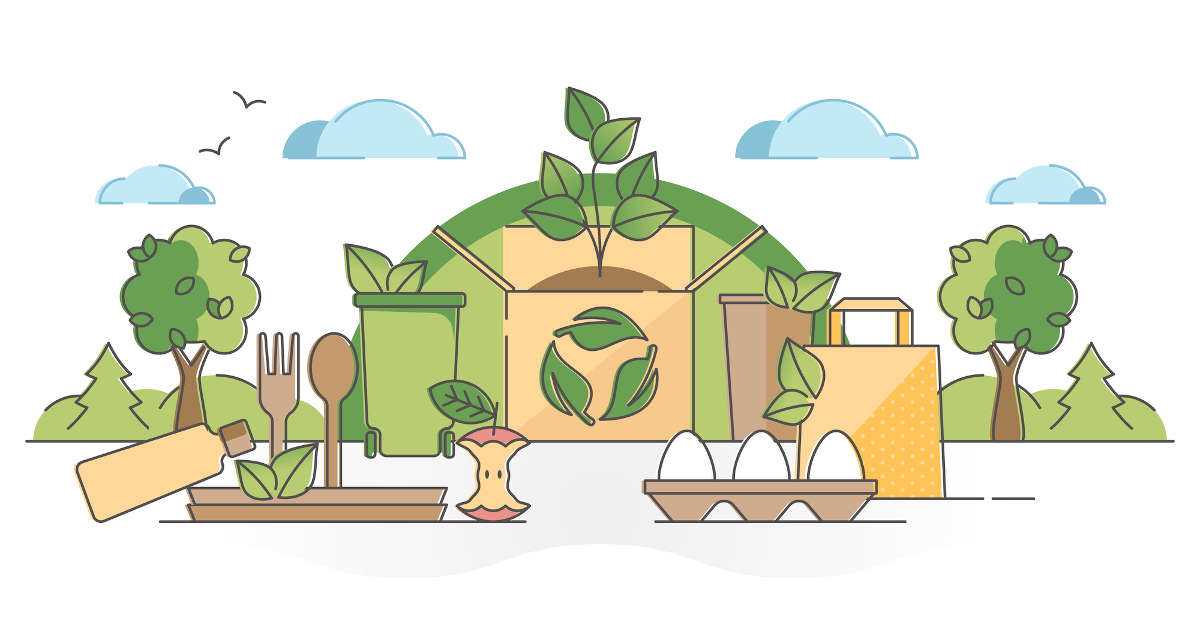New trends in environmentally sustainable packaging

Public attention is increasingly shifting to environmentally responsible production models, and companies cannot neglect these legitimate claims of environmental responsibility.
According to MarketWatch, the green packaging trend globally will reach as much as $154 billion between now and 2028 with sales topping $413 billion.
New trends in eco-sustainable packaging
Many companies operating in the packaging manufacturing industry are trying their hand at increasingly eco-friendly activities to meet both the product needs of consumers and the desire for environmental friendliness.
The footwear and shoe packaging sector, for example, is turning to cardboard and cardboard that is the result of environmentally sustainable production: the current trend is to reduce the use of unnecessary packaging and make greater use of recycled packaging, so that the material used for packaging can be recovered without affecting the environment more than it should. Cardboard is an element that can be recycled in extended form, and in this way industrial products such as cardboard cores and spiral cardboard tubes can be made.
Green packaging is a current that is affecting companies in various industries. Hair product beauty companies are considering soluble paper packaging. In fact, cosmetics are among the products with the greatest impact on nature, between packaging and transportation, partly because of the large amount of water they require for rinsing. The trend of improvement however can still grow to make up for those productions that impact the environment more than they should.
The food sector is one of the most responsive sectors when it comes to making environmentally friendly packaging. New introductions such as antioxidant and antimicrobial film (PLA) are innovations that keep food safe from contamination while combating unnecessary waste.
The production process of environmentally sustainable companies today aims to limit production waste as much as possible by using reusable materials to reduce the demand for raw materials. Production waste, for example, can give rise to a new reel for the production of corrugated boxes. By reducing the need for energy sources, pollution and deforestation can be reduced and brand attractiveness to environmentally sensitive audiences can be increased.
Eco-friendly packaging: why we need to invest
Europe is also moving in this direction, see EU Directive 2018/852 issued by the European Parliament, replacing the previous Directive 94/62/EC, which aims to reduce waste and packaging generation and incentivize recycling practices by finalizing the use of responsible production practices.
Green packaging therefore is a trend, indeed a guideline, that all companies should be inspired by, both to limit the impact of their activities on the environment and to make themselves more attractive to consumers. Intelligent design, for example, aims to exploit only the amount of raw material that is really needed for the purpose of containing and protecting products, resulting in the products that are of quality but at the same time responsive to market needs.
Green packaging aims to reuse the product at the end of its life cycle, so that it can be transformed into new elements for the purpose of producing further goods.
Green production methods aim to:
● make recycling activities more intensive
● Dispose of waste according to environmentally sound practices
● more effective packaging that aims to recover materials and optimize available resources
● develop greater environmental awareness among stakeholders in the industry
● make greater use of secondary and sustainable raw materials
● making increasing use of materials from renewable sources
Modern green techniques aim to save energy and production resources while still meeting market criteria for performance and cost. Green packaging therefore requires reorganizing the company’s production processes to meet the standards of environmentally sustainable production. The green production of packaging involves various stages, from the design to the procurement stages and waste recovery.
Thus, various eco-friendly materials used for packaging have emerged in recent years such as:
● produced from agricultural wastes processed with mushroom mycelium.
● stone paper or mineral paper (made from stones containing calcium carbonate)
● seaweed
● blends with wood fibers
● biodegradable corn residues (bioplastics).
● Corrugated paper: a 100% recyclable material that can provide a protective coating and excellent strength
that aim to meet the needs of manufacturing, logistics and transportation with a focus on the environment.